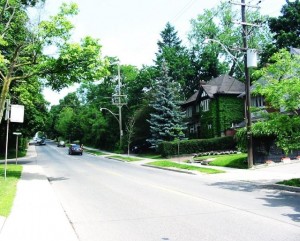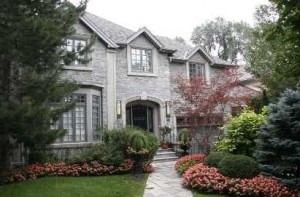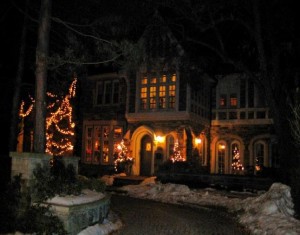The Origins and Development of Forest Hill
The Forest Hill neighbourhood as seen today in Toronto, comes from a deep history starting back in 1860. The first residence built in the Forest Hill area was located on top of the hill within the forest, however while the hill still exists today, the forest does not.
In 1923, the Forest Hill area was officially incorporated as a village. Further developments took place throughout the 1920’s and 30’s, and the southern half of Forest Hill was completed development by 1940. The majority of developments in the northern half of Forest Hill were industry and railways.
In 1957, Forest Hill officially joined the City of Toronto. This neighbourhood and Swansea Village were two of the last independent villages to be annexed with Toronto. The Forest Hill neighbourhood is now represented by a seal that displays a deer etched in the stone window crown on the front facing gable over the entrance to a station.
Today, the Forest Hill neighbourhood is one of Toronto’s prestigious neighbourhoods. It’s well known for it’s gently sloping hills, winding roads, large brick and stone homes, spacious lots, and multiple beautiful natural parks. A building code that’s been followed in Forest Hill since the 1920’s is that all homes are required to have a tree planted at the front of each property. This has worked wonderfully to help enhance Forest Hill’s reputation as one of Toronto’s three most exclusive and affluent communities!
The houses offered here in Forest Hill are some of Toronto’s finest real estate, and the actual neighbouthood is separated into lower and upper halves of Forest Hill. The lower part of Forest Hill offers marvellous brick and stone mansions that were built in the earlier 1900’s, most of which are easily worth over one million dollars each. The upper part of Forest Hill offers modern estate built between 1940 and 1960, these houses are still marketed towards the affluent, but are typically less expensive than the mansions found in the lower part of Forest Hill. You can also find numerous luxury condominium apartment buildings, located on the western side of Forest Hill. As for styles, well most of the estate in Forest Hill is Tudor or Georgian architecture, however there is also everything from French Colonial with terra cotta tiles to English country manors with sweeping lawns!
In 2007, the average sale price (not asking price) for a southern Forest Hill estate was $4.3 million Canadian dollars. A recently sold home featured:
-
a 10,000 square foot home
-
six bedrooms
-
six bathrooms
-
landscaped lot
-
designer kitchen
-
personal library
-
walnut, cherry and oak panelling
-
soundproof entertainment room
-
exercise room with spa
To help you imagine a price tag for the houses located in southern Forest Hill, this large Toronto estate with all the above features, sold for $5.5 million Canadian dollars.
Shopping is convenient for Forest Hill residence, because there’s two shopping districts to choose from. The main shopping district is located on the intersection of Spadina Road and Lonsdale Road, which caters towards the affluent Toronto residence. The other nearby shopping district is located on Eglinton West Village, and offers many fine restaurants, as well as food stores to suit every taste and budget.
Educational opportunities are available to all Forest Hill residence. There’s many great nearby elementary and secondary public schools, as well as two of Toronto’s best private schools located locally within Forest Hill! For college and university students, there’s a few options located right in Toronto, you’ll have to look around to find the best for you depending on your major.
Transportation is easily accessible to the public. Forest Hill is conveniently located between multiple bus stops, and better yet, the bus service connects with Toronto’s subway lines. This allows extremely quick transportation to where ever you need to be in Toronto!
Other Central Toronto Neighbourhoods: The Annex –Cabbagetown –Rosedale –Moore Park –North Toronto –Lawrence Park –Hoggs Hollow –Leaside –Summerhill – Regal Heights –Forest Hill –Chaplin Estates –Davisville Village –King West Village –Dovercourt Village



Speak Your Mind
You must be logged in to post a comment.